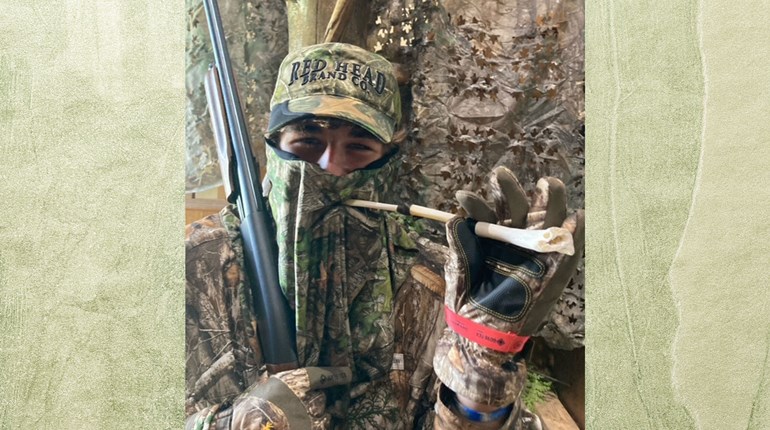Wild turkeys are the ultimate test, teaching hunters that the hunt itself is the great thing, not the amount of game taken home. There are many times when hunters leave the woods empty handed, and can only salute that ol’ gobbler. Wild turkeys mark the end of my time in the woods, because they are the last big hunt before the season ends and the long summer months begin, and since hens are off limits, young male turkeys are the best tasting meat you can hope for in the spring.
In the kitchen, wild turkeys are drier at the breast and tougher at the legs when compared to a domestic bird, especially an ol’ tom. Therefore, whereas a domestic turkey leg will make a nice drumstick, a wild turkey leg will make a nice ground turkey burger.
I recommend aging a turkey for three to six days before cooking. Unlike domestic animals, wild ones have that rich, variable flavor, because they are often older at death, exercise freely and enjoy a mixed diet. The wild flavors that result from cooking these animals are often described as “gamy.” Most Americans are used to meat that is tender, and very mild (I would even suggest flavorless). This is because today’s farmed animals live a very different lifestyle than their ancestors or wild counterparts—they are sedentary, eat a uniform diet, and are slaughtered before they reach sexual maturity. It is not surprising then, that it takes a slightly different approach to properly cook a wild animal, and the secret lies in proper aging.
Aging is a change in the activity of muscle enzymes. At death, the enzymes begin to deteriorate cell molecules indiscriminately. Large flavorless molecules become smaller, flavorful segments; proteins become savory amino acids; glycogen becomes sweet glucose; fats become aromatic. All of this deterioration and breakdown of the cell molecules creates intense flavor, which improves further upon cooking, particularly slow braising. This shift in enzyme activity also tenderizes the meat by weakening the proteins that hold things in their place. The collagen in connective tissue also begins to weaken, causing it to dissolve into gelatin during cooking and help retain moisture.
One of my favorite dishes for a well-aged wild turkey breast is schnitzel, an Austrian breaded cutlet, thin and fried. The Austrian woman who first cooked it for me served it with lingonberry sauce, but it would also go well with cranberry relish or your favorite chutney. It could also be served with gravy, mashed potatoes or on a sandwich with tomato sauce.
Wild turkey meatballs are another favorite, such as a traditional Scandinavian dish that is comforting and rich and a good use of the tougher leg meat when ground up and seasoned. The meat and gravy is ideally suited for mashed potatoes, which makes this hearty dish especially good for fall turkey season.
Turkey feathers are quite easy to pluck as long as you do just a few at a time so the skin doesn’t tear. It is better to leave the skin on, because attempting to remove it while the feathers are still on can result in a feathery mess. Because plucking them is easy, sometimes I keep the breast meat whole and use a good brine recipe overnight. Then I’ll roast the breast meat in a whiskey glaze. If you don’t have skin on your turkey breast, simply layer it with bacon or lard before cooking.
One final favorite recipe is a turkey and oyster stew, a popular recipe in New Orleans. This dish is a play on spring and all of the wild ramps and fresh peas that pop up during the turkey season. If you can’t find wild ramps in your area, green garlic, green onions or leeks are a nice substitute. The key is to use the fresh spring ingredients indigenous to your area. This is also a great way to use the carcass and leg meat of the turkey, which can be tougher and is best cooked for a longer time. In addition to cubing the leg meat, you can add the carcass with the breasts removed and let the meat fall off into the stew, then remove the carcass at the end of cooking.
Give these ideas a try and may your future turkey hunting adventures be fruitful.





































